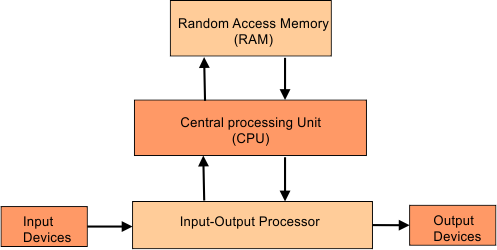Digital Computers
Digital computers are modern computers that take data as input, process it, and convert it into useful information. These computers understand only the binary language, i.e., 0 and 1. In the 1940s, the first electronic digital computer was developed.
A digital computer system is subdivided into two major categories, as below
1. Hardware: The hardware consists of all physical parts of the system, i.e. CPU, HD, Keyboard, Mouse, etc.
2. Software: The computer’s software consists of instructions and data. CPU performs operations on this data
Block Diagram
The descriptive diagram of digital computer is given below

Components of Digital Computers
There are five basic components of digital computers. let explain
1. CPU: CPU contains ALU and CU. ALU performs the computer’s arithmetic (+.-, x, /) and logical (<, =, >) operations. CU controls the executions by generating the control and timing signals.
2. RAM: Before executing any program, it loads into the RAM, the primary memory that stores the temporary data.
3. Input-output processor: The primary purpose of the input-output processor is to minimize the CPU’s involvement in transferring data from input to output devices.
4. Input devices: input devices are used to enter the data into the system, including a Keyboard, mouse, etc.
5. Output devices: Output devices are used to display the data on output devices. It includes a Monitor, printer, etc.
In the next lecture, we will see Logic Gates.













